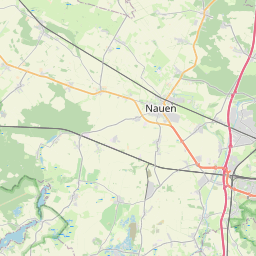Frühjahr 1948 Filming Locations

Where was Frühjahr 1948 filmed? Frühjahr 1948 was filmed in 9 locations across Germany, United States, United Kingdom, France, Lithuania and Croatia in the following places:
Frühjahr 1948 Filming Locations
Berlin, Germany’s capital, dates to the 13th century. Reminders of the city's turbulent 20th-century history include its Holocaust memorial and the Berlin Wall's graffitied remains. Divided during the Cold War, its 18th-century Brandenburg Gate has become a symbol of reunification. The city's also known for its art scene and modern landmarks like the gold-colored, swoop-roofed Berliner Philharmonie, built in 1963.
Dorset is a county in southwest England. It’s known for the Jurassic Coast, a long stretch on the English Channel where the cliffs contain many fossils, and rock formations show millions of years of geological history. Two prominent natural landmarks are Durdle Door, an ancient stone arch, and the layered cliffs at nearby Lulworth Cove. The towns of Poole, Weymouth and Swanage are popular for their sandy beaches.
Cologne, a 2,000-year-old city spanning the Rhine River in western Germany, is the region’s cultural hub. A landmark of High Gothic architecture set amid reconstructed old town, the twin-spired Cologne Cathedral is also known for its gilded medieval reliquary and sweeping river views. The adjacent Museum Ludwig showcases 20th-century art, including many masterpieces by Picasso, and the Romano-Germanic Museum houses Roman antiquities.
Munich, Bavaria’s capital, is home to centuries-old buildings and numerous museums. The city is known for its annual Oktoberfest celebration and its beer halls, including the famed Hofbräuhaus, founded in 1589. In the Altstadt (Old Town), central Marienplatz square contains landmarks such as Neo-Gothic Neues Rathaus (town hall), with a popular glockenspiel show that chimes and reenacts stories from the 16th century.
New York City comprises 5 boroughs sitting where the Hudson River meets the Atlantic Ocean. At its core is Manhattan, a densely populated borough that’s among the world’s major commercial, financial and cultural centers. Its iconic sites include skyscrapers such as the Empire State Building and sprawling Central Park. Broadway theater is staged in neon-lit Times Square.
Paris, France's capital, is a major European city and a global center for art, fashion, gastronomy and culture. Its 19th-century cityscape is crisscrossed by wide boulevards and the River Seine. Beyond such landmarks as the Eiffel Tower and the 12th-century, Gothic Notre-Dame cathedral, the city is known for its cafe culture and designer boutiques along the Rue du Faubourg Saint-Honoré.
Vilnius, Lithuania’s capital, is known for its baroque architecture, seen especially in its medieval Old Town. But the buildings lining this district’s partially cobblestoned streets reflect diverse styles and eras, from the neoclassical Vilnius Cathedral to Gothic St. Anne's Church. The 16th-century Gate of Dawn, containing a shrine with a sacred Virgin Mary icon, once guarded an entrance to the original city.
Zagreb, Croatia’s northwestern capital, is distinguished by its 18th- and 19th-century Austro-Hungarian architecture. At its center, Upper Town is the site of the Gothic, twin-spired Zagreb Cathedral and 13th-century St. Mark’s Church, with a colorfully tiled roof. Nearby is pedestrian-friendly Tkalčićeva Street, lined with outdoor cafes. Lower Town has the main square, Ban Jelačić, plus shops, museums and parks.
Frühjahr 1948 (2018)
Three years after the end of the Second World War, Europe is once again on an historic threshold. Will the continent finally find lasting peace? Will people's hopes for a better future be fulfilled? The allies of yesterday have become the enemies of today. An Iron Curtain separates East and West, communism and capitalism. It looks as if the curtain will remain down for a long time. The first half of 1948 brings decisive turning points: a Communist coup in Prague, the consolidation of Stalin's power in Eastern Europe, in Yugoslavia the break between Tito and Stalin, and a crisis in Berlin that becomes a test of power and takes the world to the brink of a new great war. The Jews of Europe find a new home in Israel. The spring of 48 will continue to have an effect for decades to come. Contemporary witnesses such as the Frenchman Marc Ferro, the German Günter Lamprecht or the Russian Maja Turowskaja tell of their experiences in crisis-ridden post-war France, of the hope for a democratic awakening in Czechoslovakia, of Stalinism in Moscow. There is a phase of euphoria in socialist Yugoslavia and the fear of a new war among the Berliners, who have just cleared away the rubble. Texts by contemporary authors such as Anna Seghers and Simone de Beauvoir lead us into this period of uncertainty and search for orientation. Rarely shown archive material shows a year in which decisive decisions were made for the future of the continent.













